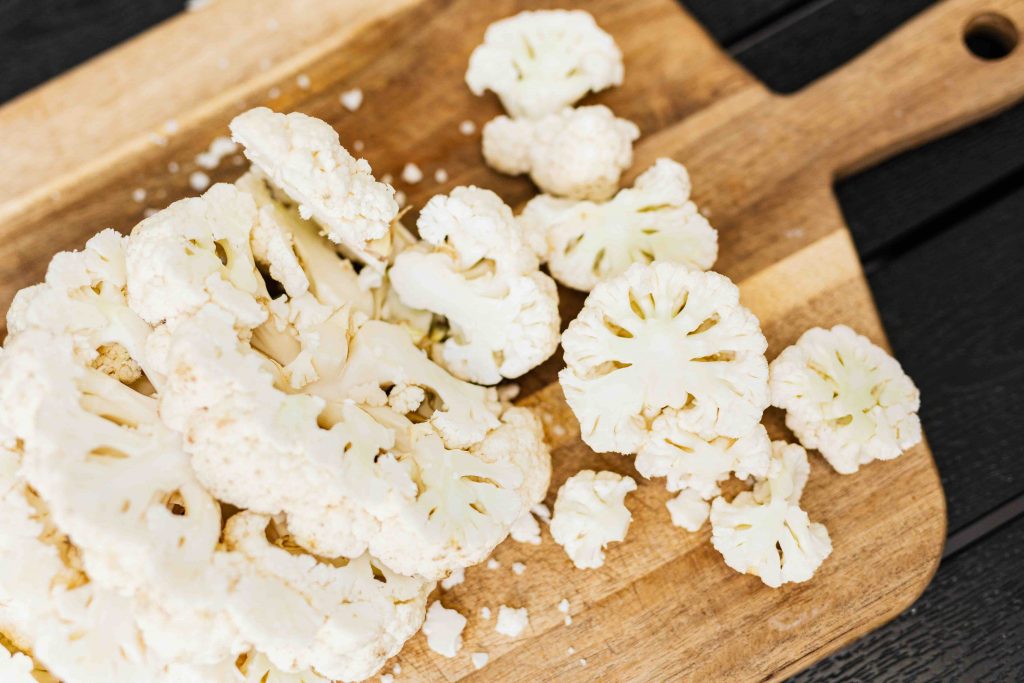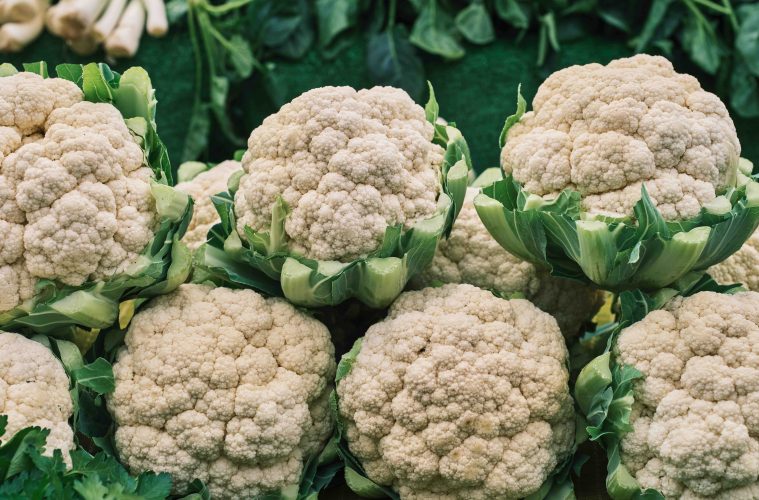The trend of using cauliflower as a carbohydrate or bread substitute has meant an increase in the popularity of the vegetable in the supermarkets. As usual, with more demand comes a bigger price tag. That is why anyone with a space big enough to grow something should be growing their own cauliflower.
Depending on the amount of cauliflower a family of four will consume, it’s safe to say that you may only need to plant 5 seeds or seedlings every 2-4 weeks to have a regular source of homegrown cauliflower.
Depending on the variety and your location, in frost free areas cauliflower can be grown all year round. Most of the varieties are the cool season crops that are best during autumn and winter. They are long season crops needing 3-4 months from sowing seed before you can harvest, that is why it’s essential to succession sow in order to have a continuous supply of fresh heads of cauliflower. Also look out for the yellow, green and purple varieties now available in seed form to try in the garden.
Sow seed in situ according to the packet instructions. It’s a common practise to sow 3 seeds per hole and then pick out the weaker seedlings to eat as sprouts in a salad. You may need to mound the soil up around seedlings as they tend to be quite weak at their beginning stages. 
How to grow cauliflower
Soil
Cauliflower plants need very nutrient rich soil to begin with enriched with plenty of compost and a few handfuls of added nutrition like a general organic slow-release fertiliser. The soil should be more loamy than sandy and have good drainage.
Light
Although most seed packets will tell you to plant in full sun, seasoned gardeners may disagree and say that cauliflowers will do better in the colder parts of the garden with afternoon shade.
Water
Cauliflowers like to be kept well-watered but not waterlogged and they don’t like wet feet. Don’t allow them to dry out or it may stress them out and invite unwanted pests. When they wilt, they also stop growing.
Feeding
They are known as heavy feeders, requiring a regular feeding schedule. Feed every 2 weeks with a slow-release fertiliser or a liquid fertiliser mixed with their water.
Pests and Diseases
Look out for cutworms on cauliflowers that could decimate a crop in a few days. For smaller seedlings, use cardboard collars pushed into the soil around the plants to stop the cutworms from getting to the plants or use cutworm bait. Make sure to space plants well apart to avoid aphids, but if you do find any, spray with a light solution of soapy water or in very severe cases use an organic insecticide.
Harvesting
Once the curds are firm and fully developed, nicely rounded and the lower stems not yet branching out, cut off the head with a few surrounding leaves and then pull out the rest of the plant and compost it. Place in a cool, dark place or refrigerate and use within 3-4 weeks.
Cauliflower Tips
The white head of the cauliflower, the part we like to blend up to make pizza bases or mash, is known as the curd. Once this starts forming, it may begin to yellow. In order to keep it snowy white and fresh-looking, when it’s about 10cm in diameter, fold over the outer leaves to protect it and secure them with paperclips or string. This helps avoid the discolouring of the curd.
ALSO SEE: HOW TO GROW SPINACH


